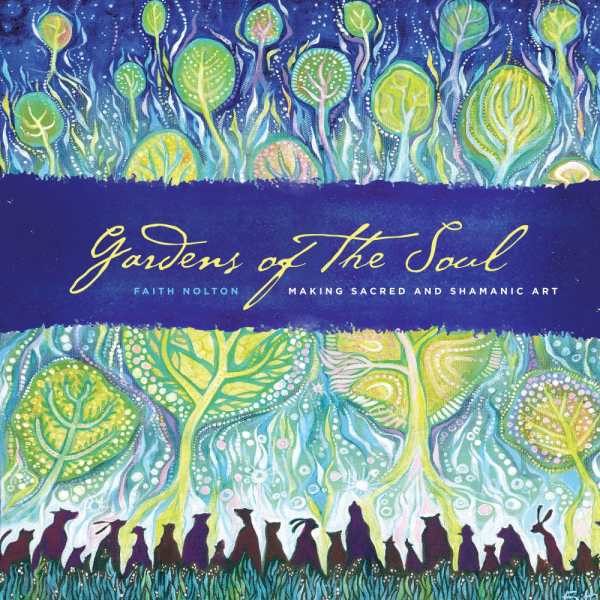Gardens of the Soul
Making Sacred and Shamanic Art
Nolton reminds readers through her engaging and encouraging words that creation as a spiritual pursuit is worthwhile, if challenging, work.
Welsh visionary artist Faith Nolton shares stories and paintings from her path as a shamanic guide and artist in Gardens of the Soul: Making Sacred and Shamanic Art, a lovely and encouraging book, especially for those already on a spiritual path. These essays can be read both as a memoir of Nolton’s time as a visionary healer and as instructions or suggestions that might guide a reader to a more spiritual view of art or a means of seeking the sacred through their art.
The book includes essays, reflections, paintings, poems, and suggestions for readers as they make their own sacred art. It aims to be somewhat practical as well as spiritual, covering topics such as the energy of the studio space and the tools used to make art, as well as more esoteric subjects like communicating with spirits and listening to the songs of plant life.
Gardens of the Soul inspires readers to look to the spiritual traditions of people from around the world and to seek guidance from spiritual helpers with the understanding that they can’t solve problems in this realm. “There are many choices that are ours alone to make in our life path, and the spirits are there to help and advise, but not to make it easy,” she writes.
Nolton reminds readers through her engaging and encouraging words that creating is a sacred act, that people as creative beings need care and attention for themselves and their spirits, and that creation as a spiritual pursuit is worthwhile, if challenging, work. Those new to such work will find some suggestions on how they might grow as spiritual artists, while those with some experience in these realms will be more comfortable with her stories of communing with spirits, soul healing, and speaking to the spirit animals of others.
Through her reflections, art, and poetry, Nolton seeks to guide others to “step into the otherworlds,” always reminding readers that the purpose is “to shift the awareness deliberately and not just to detune reality randomly.” The art connects to the essays as a means of illustrating the story she is telling or as a reflection of the theme, as well as providing examples of sacred art in practice.
It would have been helpful to have a little more basic information—or even suggestions for further reading—on topics such as spirit animals, vision quests, and lesser-known spiritual traditions to help people who are just starting on their sacred journeys. As it is, this book feels like it’s mostly made for people who are already on the path of making spiritual art. Beginners may feel overwhelmed by advice to, for instance “manage the studio energy by creating altars for specific purposes” or to “reflect on what you know at present of your true self” and “collect pieces that symbolize key aspects for you.”
Nonetheless, this is a beautiful book full of provocative images and inspiring words that likely would make those beginners wish for and try to seek out their own spiritual guides so they might feel a similar connection to the earth, to their ancestors, and to their art as Nolton does.
Reviewed by
Sarah White
Disclosure: This article is not an endorsement, but a review. The publisher of this book provided free copies of the book and paid a small fee to have their book reviewed by a professional reviewer. Foreword Reviews and Clarion Reviews make no guarantee that the publisher will receive a positive review. Foreword Magazine, Inc. is disclosing this in accordance with the Federal Trade Commission’s 16 CFR, Part 255.

